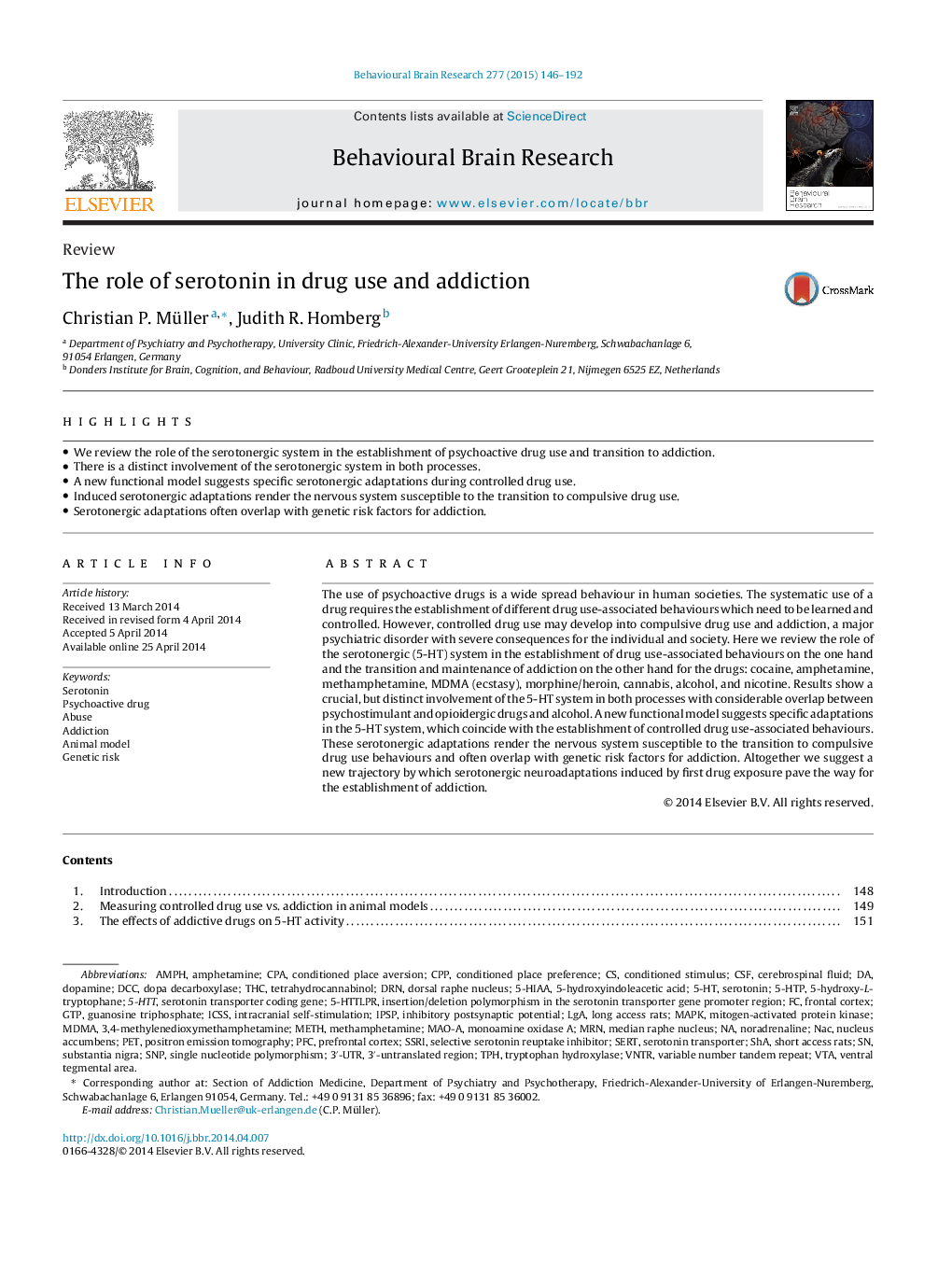| Article ID | Journal | Published Year | Pages | File Type |
|---|---|---|---|---|
| 6257399 | Behavioural Brain Research | 2015 | 47 Pages |
â¢We review the role of the serotonergic system in the establishment of psychoactive drug use and transition to addiction.â¢There is a distinct involvement of the serotonergic system in both processes.â¢A new functional model suggests specific serotonergic adaptations during controlled drug use.â¢Induced serotonergic adaptations render the nervous system susceptible to the transition to compulsive drug use.â¢Serotonergic adaptations often overlap with genetic risk factors for addiction.
The use of psychoactive drugs is a wide spread behaviour in human societies. The systematic use of a drug requires the establishment of different drug use-associated behaviours which need to be learned and controlled. However, controlled drug use may develop into compulsive drug use and addiction, a major psychiatric disorder with severe consequences for the individual and society. Here we review the role of the serotonergic (5-HT) system in the establishment of drug use-associated behaviours on the one hand and the transition and maintenance of addiction on the other hand for the drugs: cocaine, amphetamine, methamphetamine, MDMA (ecstasy), morphine/heroin, cannabis, alcohol, and nicotine. Results show a crucial, but distinct involvement of the 5-HT system in both processes with considerable overlap between psychostimulant and opioidergic drugs and alcohol. A new functional model suggests specific adaptations in the 5-HT system, which coincide with the establishment of controlled drug use-associated behaviours. These serotonergic adaptations render the nervous system susceptible to the transition to compulsive drug use behaviours and often overlap with genetic risk factors for addiction. Altogether we suggest a new trajectory by which serotonergic neuroadaptations induced by first drug exposure pave the way for the establishment of addiction.
